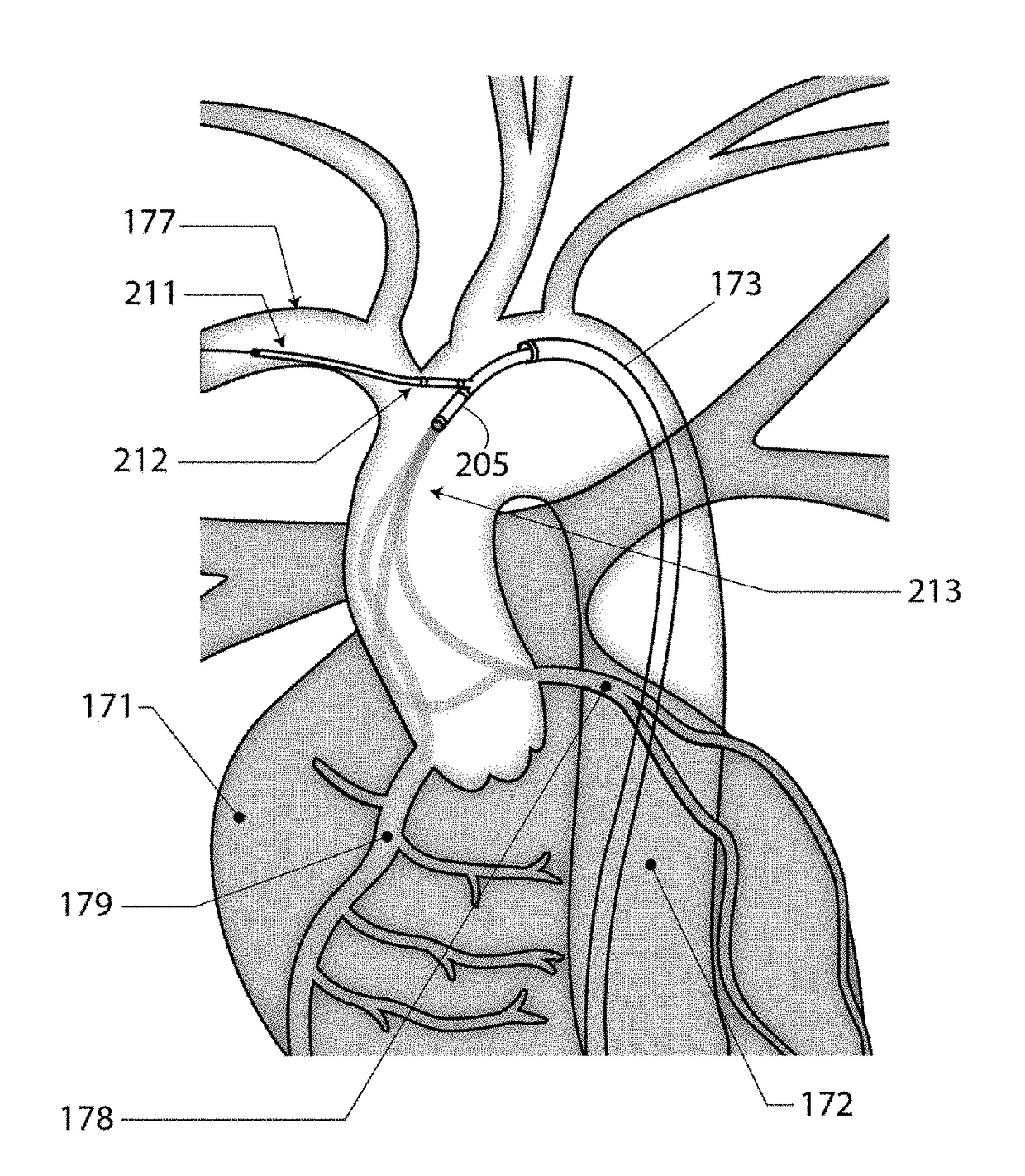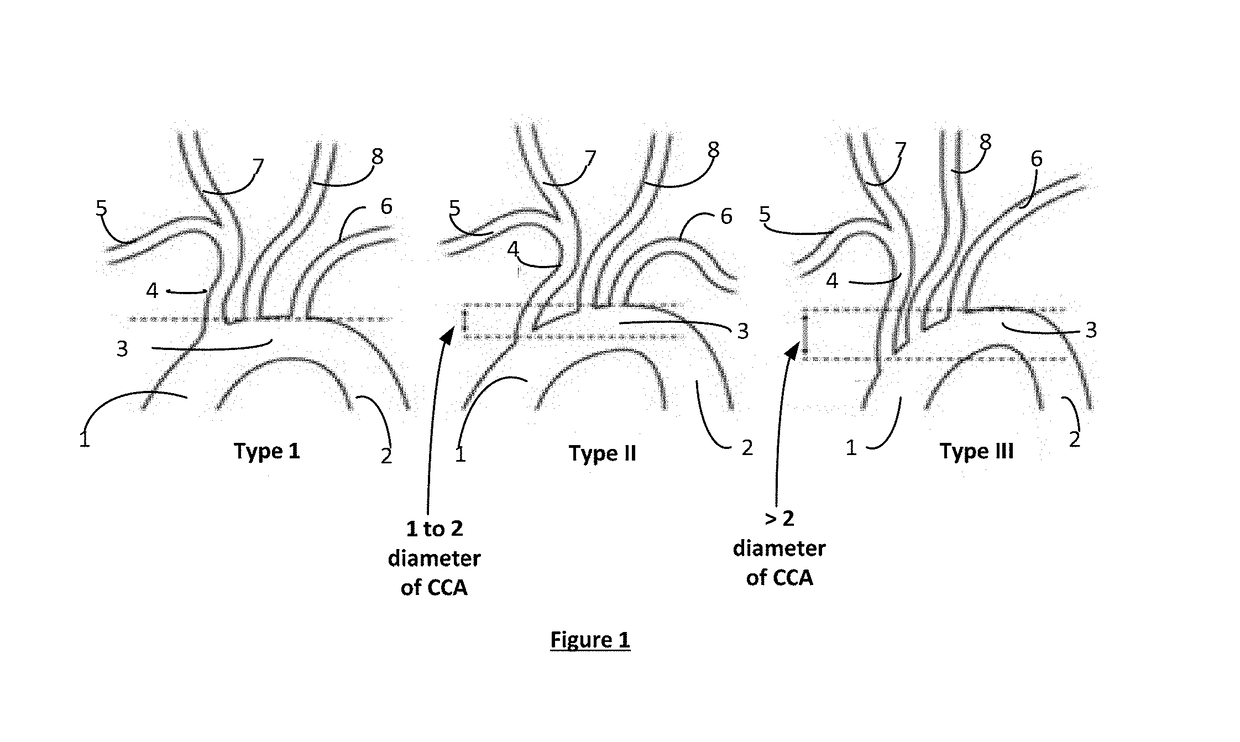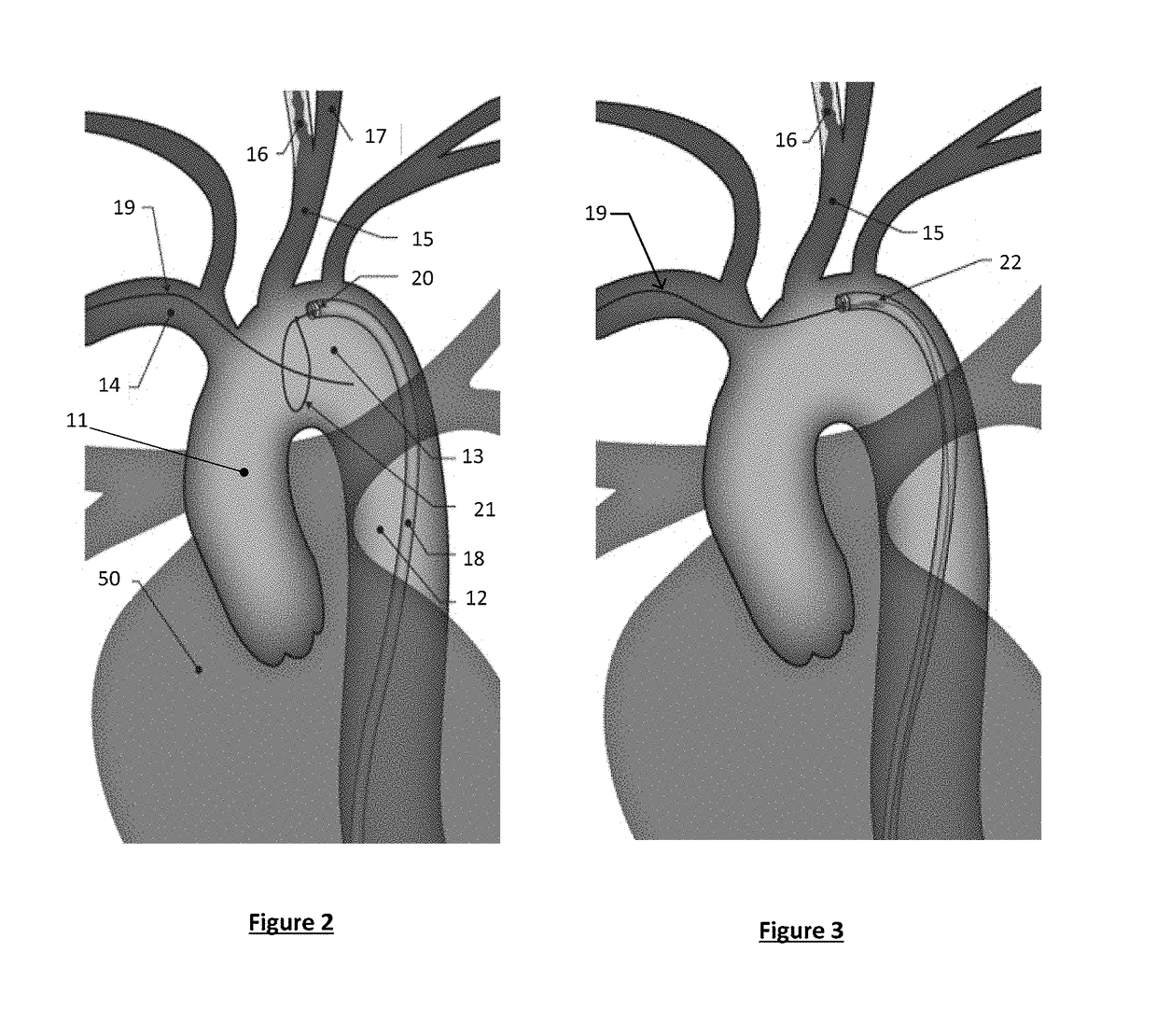Bifurcated "y" anchor support for coronary interventions
a technology of bifurcated anchors and coronary interventions, which is applied in the field of bifurcated anchors for coronary interventions and coronary interventions, can solve the problems of increasing the difficulty of carotid artery procedures, increasing the difficulty of carotid artery access, and increasing the difficulty of subsequent placement of stents in a stable mode into the arterial system above i
- Summary
- Abstract
- Description
- Claims
- Application Information
AI Technical Summary
Benefits of technology
Problems solved by technology
Method used
Image
Examples
first embodiment
[0060]the invention is described with reference to the schematic diagrams shown in FIGS. 2 to 7 and the flow chart of FIG. 8A. This embodiment illustrates the ability to conduct procedures such as stenting in the left internal carotid artery (LICA) 16 using a procedural catheter that can be inserted through the aortic arch 13 and left common carotid artery 15.
[0061]As shown in FIG. 2, a sheath catheter 18 is initially inserted percutaneously and guided using fluoroscopic tracking using the opaque metal ring 20 at its distal end. In one embodiment, the sheath catheter 18 is a 7 French (Fr) or 8 Fr sheath; it will be appreciated that differently sized sheath catheters may be used as known to those of skill in the art. The sheath 18 is guided through the femoral artery and the descending thoracic aorta 12 to the aortic arch 13. A snare wire is inserted through the sheath 18 and extended to the aortic arch 13 with a snare loop 21. In one embodiment, the snare loop has a diameter that is...
PUM
 Login to View More
Login to View More Abstract
Description
Claims
Application Information
 Login to View More
Login to View More - R&D
- Intellectual Property
- Life Sciences
- Materials
- Tech Scout
- Unparalleled Data Quality
- Higher Quality Content
- 60% Fewer Hallucinations
Browse by: Latest US Patents, China's latest patents, Technical Efficacy Thesaurus, Application Domain, Technology Topic, Popular Technical Reports.
© 2025 PatSnap. All rights reserved.Legal|Privacy policy|Modern Slavery Act Transparency Statement|Sitemap|About US| Contact US: help@patsnap.com



